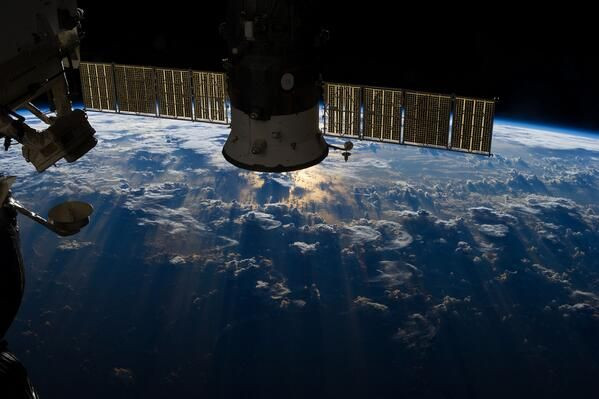US Navy Robots To Build Satellite That Would Beam Solar Energy From Space

The world’s largest oil consumer, the Pentagon, wants to harvest energy in space.
The U.S. Naval Research Laboratory (NRL) is building solar panels that it plans to launch into space. The panels would be used to beam energy back to Earth to power military operations, especially in remote areas where transporting fuel is dangerous and expensive.
The plan envisions using robots to assemble the solar panels into a kilometer-long reflecting mass. That’s the length of nine American football fields. The only other satellite that comes close to that size is the International Space Station, which is only slightly longer than one football field.
"Hard to tell if it's nuts until you've actually tried,” Paul Jaffe, a spacecraft engineer at NRL, said in a statement, about building such a satellite.
The NRL has tested two prototypes of what it calls a “sandwich” module, which uses a photovoltaic panel that absorbs the sun’s radiation "on top," an electronics system "in the middle" that converts the energy to a radio frequency and an antenna "on bottom" that shoots the radio waves toward a target on the Earth’s surface. The NRL’s Space Robotics Group is building robots that it hopes to use to assemble several sandwich modules into a single powerful satellite.
The second type of module modifies the sandwich design by opening up solar panels, increasing the area available for solar absorption without overheating.
Space solar energy production in theory produces energy more efficiently than terrestrial solar energy production because it can soak up sunlight 24 hours a day, free from changing weather conditions. Ideally, a solar power generating satellite would provide power at about 10 cents per kilowatt hour, which is competitive with local price in many places.
Several companies are interested in space solar power, including California utility company Pacific Gas & Electric, which has a contract with Solaren to buy space solar power by 2016. The Shimizu Corporation in Japan announced plans in February to build a solar strip across 11,000 miles on the moon. That project, if completed, would transfer energy through microwaves and laser light to Earth several decades from now.
The idea of space solar power has been around since at least the 1970s, after an American scientist powered a helicopter by beaming microwaves from space. The International Academy of Astronautics recently concluded in a report that space solar power technology would be viable within the next 30 years.
© Copyright IBTimes 2024. All rights reserved.





















